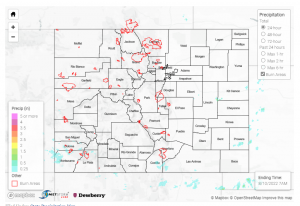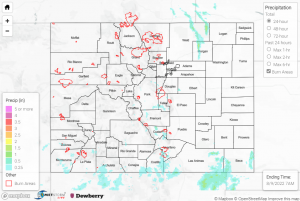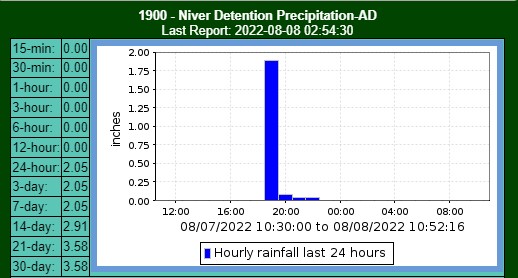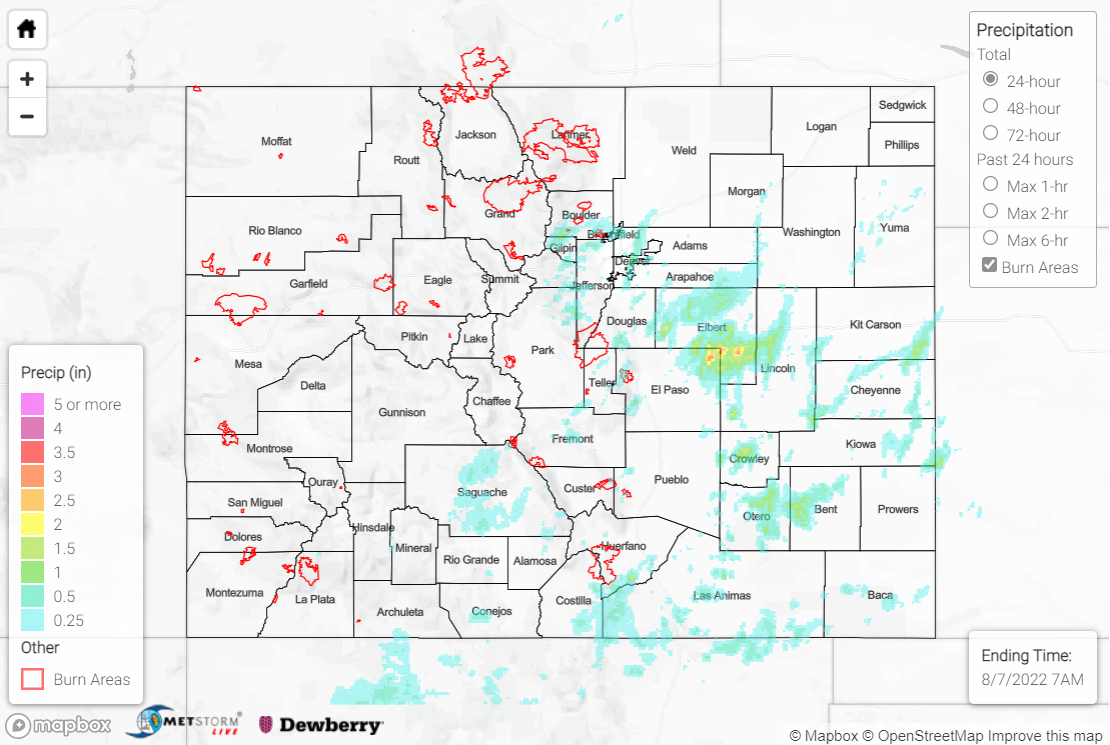Issue Date: Wednesday, August 10th, 2022
Issue Time: 9:30 AM MDT
Summary:
Yesterday was quite calm across the state. The only rainfall across Colorado was in the south, from the Southeast Mountains over to the western border on the Southwest Slope. Most observations in this region were trace – 0.1”, but some higher totals include 0.28” in Alamosa, 0.14” near Chromo, 0.24” near Mancos, and 0. 42” northwest of Durango. The precipitation was reported as a result of afternoon and evening storms, via CoCoRaHS observations.
No flooding or severe weather was reported yesterday.
If you observe flooding in your area, remember to use the “Report a Flood” page to make any flood reports when you can safely do so. For precipitation estimates in our area, check out the map below.




